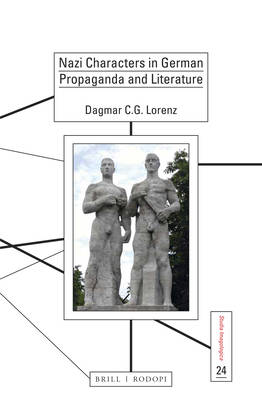
- Afhalen na 1 uur in een winkel met voorraad
- Gratis thuislevering in België vanaf € 30
- Ruim aanbod met 7 miljoen producten
- Afhalen na 1 uur in een winkel met voorraad
- Gratis thuislevering in België vanaf € 30
- Ruim aanbod met 7 miljoen producten
Zoeken
Omschrijving
Winner of the 2019 Choice Outstanding Academic Title
Stereotypical characters that promoted the Nazi worldview were repurposed by antifascist authors in Weimar Germany, argues Dagmar C.G. Lorenz. This is the first book to trace Nazi characters through the German and Austrian literature. Until the defeat of the Third Reich, pro-Nazi literature was widely distributed. However, after the war, Nazi publications were suppressed or even banned, and new writers began to dominate the market alongside exile and resistance authors. The fact that Nazi figures remained consistent suggests that, rather than representing real people, they functioned as ideological signifiers. Recent literature and films set in the Nazi era show that "the Nazis", ambiguous characters with a sinister appeal, live on as an established trope in the cultural imagination.
Stereotypical characters that promoted the Nazi worldview were repurposed by antifascist authors in Weimar Germany, argues Dagmar C.G. Lorenz. This is the first book to trace Nazi characters through the German and Austrian literature. Until the defeat of the Third Reich, pro-Nazi literature was widely distributed. However, after the war, Nazi publications were suppressed or even banned, and new writers began to dominate the market alongside exile and resistance authors. The fact that Nazi figures remained consistent suggests that, rather than representing real people, they functioned as ideological signifiers. Recent literature and films set in the Nazi era show that "the Nazis", ambiguous characters with a sinister appeal, live on as an established trope in the cultural imagination.
Specificaties
Betrokkenen
- Auteur(s):
- Uitgeverij:
Inhoud
- Aantal bladzijden:
- 186
- Taal:
- Engels
- Reeks:
- Reeksnummer:
- nr. 24
Eigenschappen
- Productcode (EAN):
- 9789004365254
- Verschijningsdatum:
- 5/07/2018
- Uitvoering:
- Hardcover
- Formaat:
- Genaaid
- Afmetingen:
- 157 mm x 236 mm
- Gewicht:
- 544 g

Alleen bij Standaard Boekhandel
+ 323 punten op je klantenkaart van Standaard Boekhandel
Beoordelingen
We publiceren alleen reviews die voldoen aan de voorwaarden voor reviews. Bekijk onze voorwaarden voor reviews.








